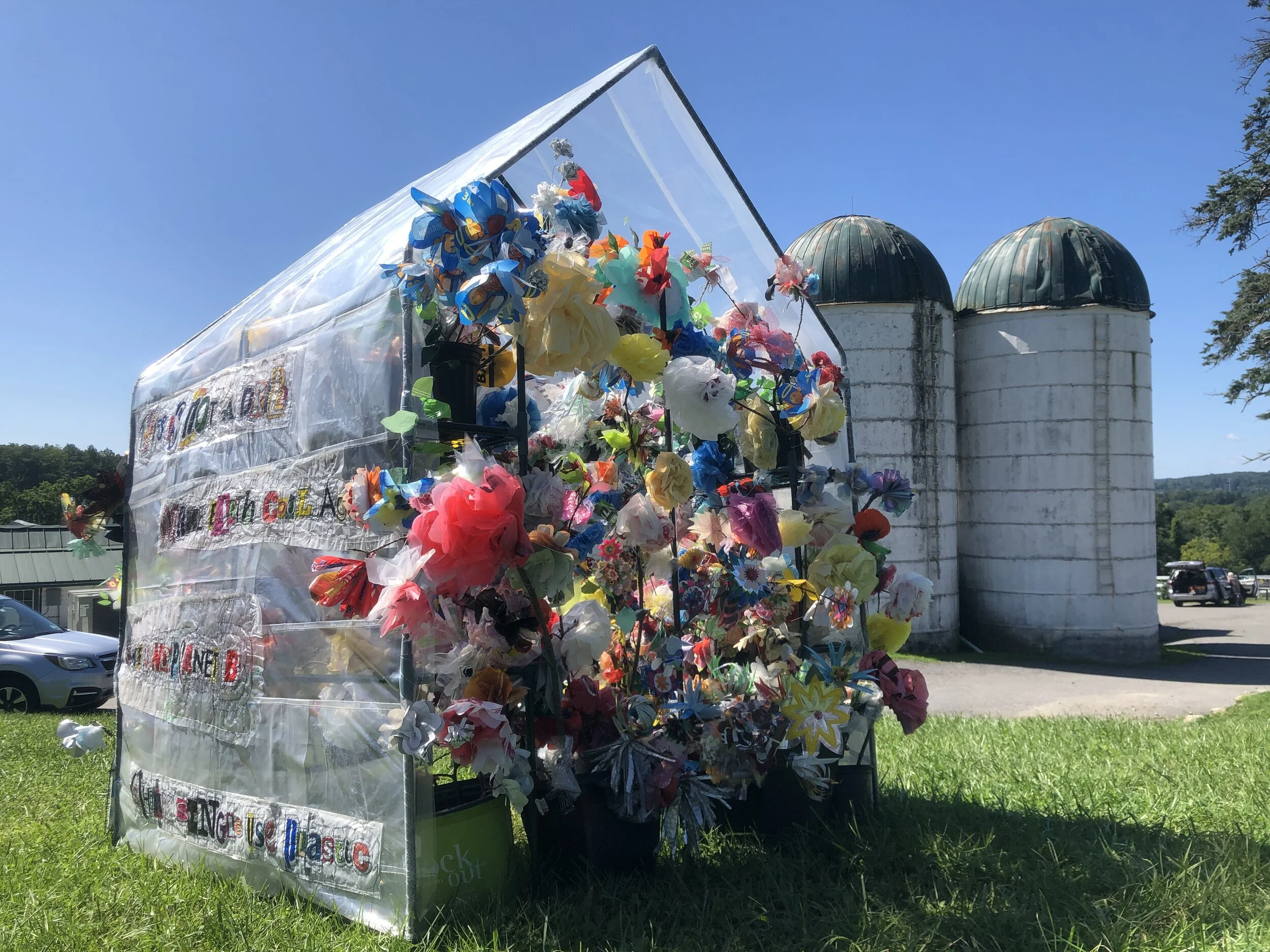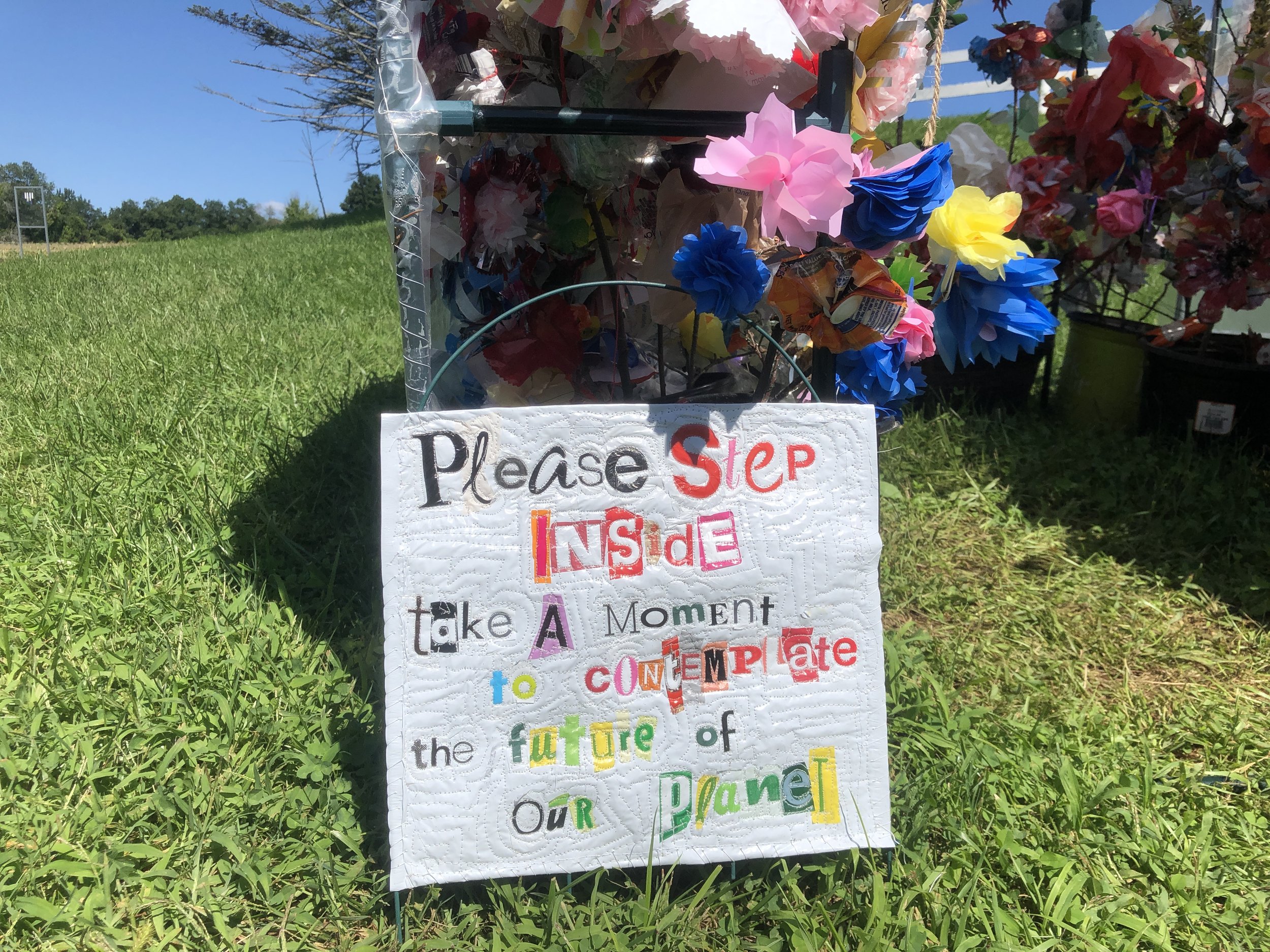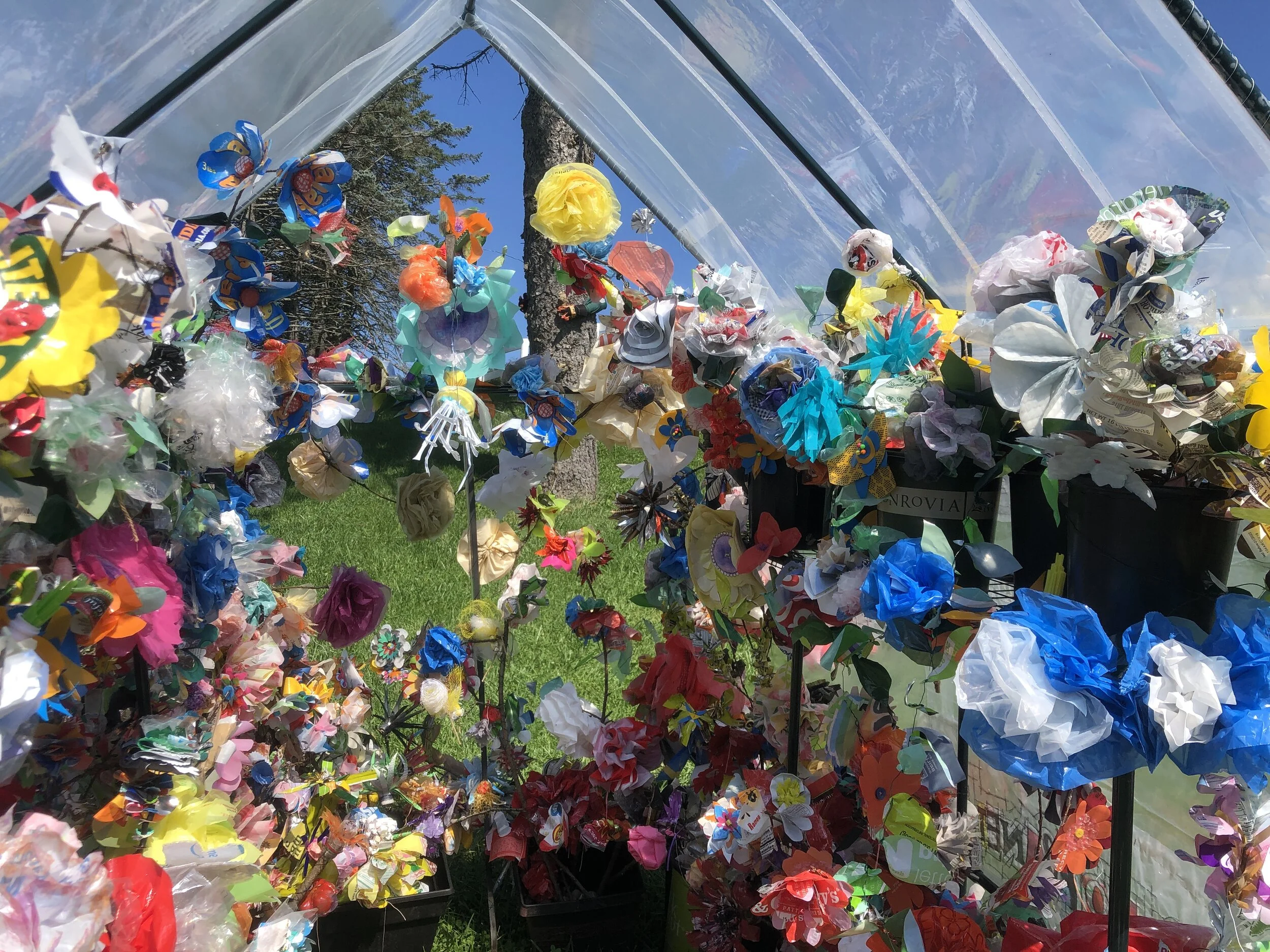
KIDS RULE ART AND DESIGN
Let your kids express their creativity by designing and building a site specific art installation in the school while learning about climate change and plastic pollution.
Here’s how it works:
-

Start with a creative information session.
The visiting artist will come in to give a presentation about the dangers of plastic pollution and its impact on our environment. She will also talk about the solutions that are available and/or are being proposed by science. Then the artist will give examples of creative installations made from non recyclable plastic materials, which will be followed by a brainstorming session with the students.
-
Continue with another brainstorming session.
Once the students have time to absorb the information and reflect on what types of materials are available to them in their homes and/or school, it’s time for another brainstorming session with the artist advisor. This is where the kids get to refine their ideas, decide on the scope of their installation and make a plan on how to achieve their goals.
-
Follow up.
Follow up with a time period to gather supplies, clarify their ideas, take measurements of the site and make sketches of the intended installation.
The visiting artist will be available via email and FaceTime/Zoom, or in person to bounce off ideas, help propel the project forward and keep the students focused.
-
Then it’s time to schedule the art making sessions!
Depending on the school schedule, the artist will meet with the kids once a week, or several times a week to start creating the installation. Conditional to the scope of the planned installation, these sessions will be anywhere from an hour to three hours long and last two or more weeks.
-
Finally the reveal!
On a specified date the installation will be completed and revealed to the rest of the school. During the celebration the students will give a presentation about what they have learned about climate science, art, creativity and working as a team.
-

This project will:
Sharpen kids observational skills.
Deepen the connection students make between conceptual thinking and tangible process.
Help them gain new perspectives in comprehension, interpretation, and curiosity to explore in a creative way.
Beneficial for most grade levels and can be simplified or made more complex. Available to be scheduled during the school day or as an after school program.





